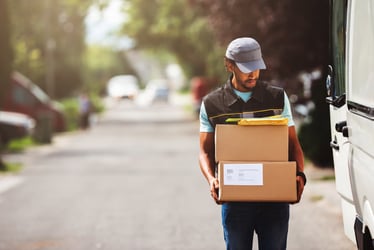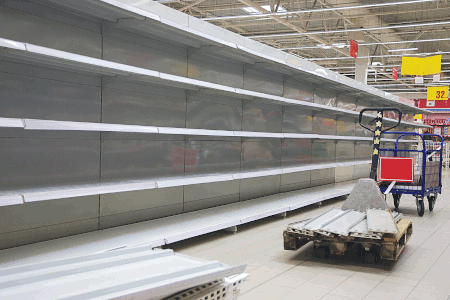Related Posts



You are about to leave Risk Strategies website and view the content of an external website.
You are leaving risk-strategies.com
By accessing this link, you will be leaving Risk Strategies website and entering a website hosted by another party. Please be advised that you will no longer be subject to, or under the protection of, the privacy and security policies of Risk Strategies website. We encourage you to read and evaluate the privacy and security policies of the site you are entering, which may be different than those of Risk Strategies.


As non-essential businesses closed and people avoided public places, the COVID-19 pandemic radically changed what, when, and how people buy goods. Quickly gone were the days of walking through Target and impulse buying. Shopping online for essentials has become the new normal and suddenly, even Amazon’s two-day Prime shipping no longer meets the expectations of consumers who want their items immediately. It’s a big challenge for retailers, and a big opportunity for last-mile delivery.
For brands and merchants, aligning their business models with this shift and seeing it as more than a pandemic blip will be vital to positioning themselves for success in the new reality. They have only to look back a decade at big-box stores who didn’t shift their focus to e-commerce quickly enough, and as Amazon began their rise, to see the peril this time – a steady stream of retailers filing for bankruptcy.
So, what can retail businesses do now to take this sudden shift in stride?
From Brick-and-Mortar to Distribution Centers
Amazon is perceived to be the 800-pound gorilla of e-commerce, but big retailers such as Walmart can quickly turn what has been previously perceived as a weakness into a key advantage. Taking a page out of the Amazon playbook, retailers have an opportunity to give consumers what ultimately Amazon has trained them to desire – same-day delivery.
For example, Walmart has started converting old Sam’s Club storefronts into online fulfillment centers. By refocusing the storefronts of their existing national real estate portfolio on distribution and using existing product inventory, traditional retail companies can quickly become competitive in the same-day delivery market.
Amazon, on the other hand, doesn’t have nearly as large of a footprint. Their distribution centers nationwide are not yet near the size and scale of established retailers like Walmart and could cause the e-commerce giant to potentially fall behind. Further, large retailers have long focused on siting stores in profitable locations, close to desirable clientele and population centers. This is yet another potential advantage in the same-day delivery competition.
Large retailers that can accelerate their e-commerce plans and establish a delivery network that can deliver goods the fastest will find themselves well-positioned to compete as Amazon’s empire continues to build.
Micro-Warehousing
The logistics around same- or next-day delivery are incredibly complicated, often reserved for only the powerhouse brands like Walmart that have the money and resources. The pandemic crashing the commercial real estate market, however, has made more room for micro-warehouse offerings. Emerging in former retail properties or office spaces, these warehouses convert available properties into fulfillment and distribution centers for less well-capitalized brands.
For example, Ohi is an innovative warehousing company enabling same-day delivery for e-commerce brands that has popped up in major cities like New York, San Francisco and Los Angeles. The company offers flexible lease terms on their warehouse spaces that can be as short as three months, helping a brand quickly jump into same-day delivery with last-mile courier service partners like Postmates or Doordash.
Same- or next-day delivery is pointing the way to the future of retail, accelerating the demand for delivery companies and requiring speed and agility through all facets of business. Those seeking to be part of the last-mile in same-day delivery and supporting retailers and brands rushing into the space should make sure they’re ready with the proper insurance coverage. Drop us a line — our team can keep pace and is here to help.
Want to learn more?
Find me on LinkedIn, here.
Connect with the Risk Strategies Transportation team at transportation@risk‐strategies.com.
Email me directly at bpaulozzi@risk‐strategies.com.
The contents of this article are for general informational purposes only and Risk Strategies Company makes no representation or warranty of any kind, express or implied, regarding the accuracy or completeness of any information contained herein. Any recommendations contained herein are intended to provide insight based on currently available information for consideration and should be vetted against applicable legal and business needs before application to a specific client.


